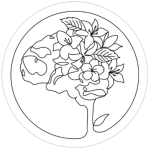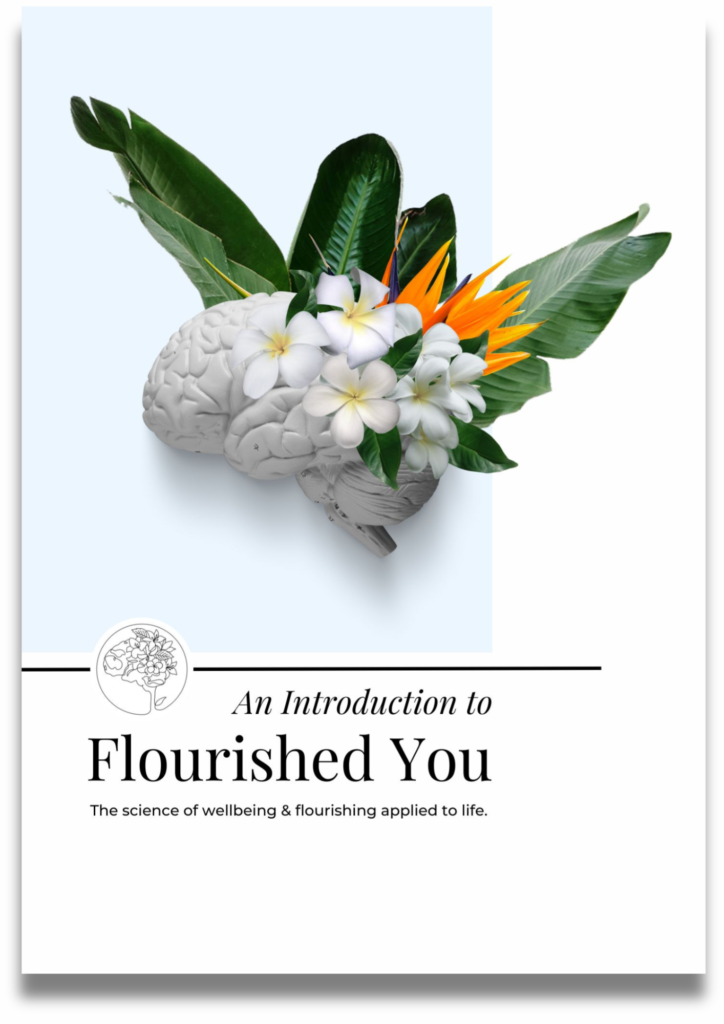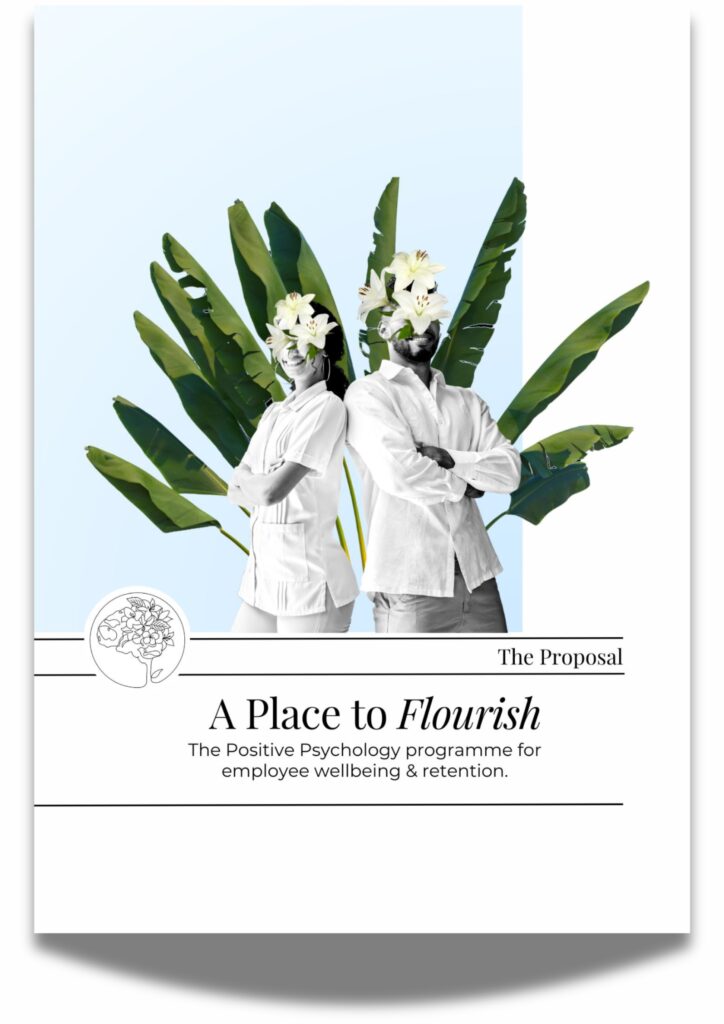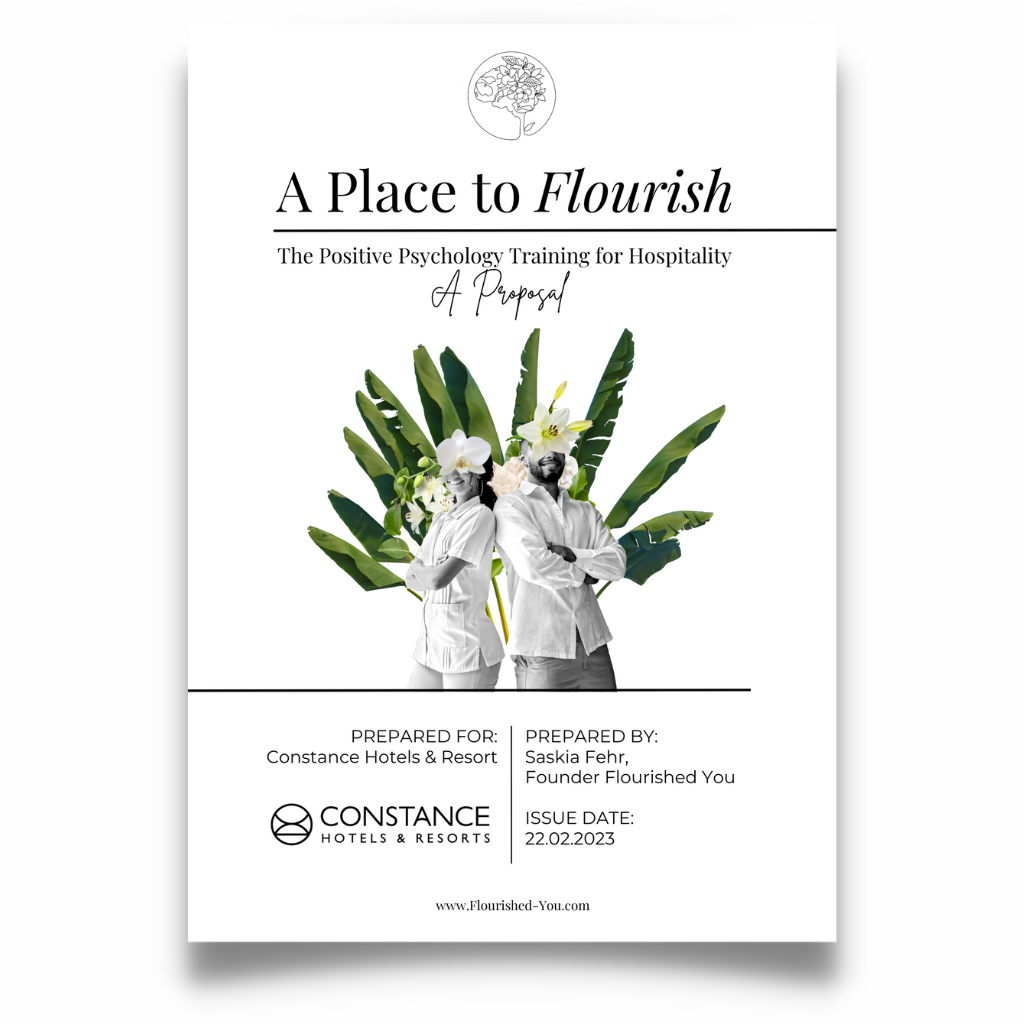The Article at a Glance
-
- Wellbeing is an individual phenomenon defined by the individual’s capability for satisfaction, their value system and the state of different life domains.
-
- The life domains that Flourished You facilitates through coaching and group work are Positive Emotions, Engagement, Relationships, Meaning & Purpose, Achievement and Vitality.
-
- If all the life domains that are considered important for the wellbeing of a person are highly satisfactory, the person is considered to be flourishing.
-
- Toxic Positivity is the urge to maintain positive thinking in all situations and to allow only positive feelings, which has a negative impact on wellbeing and should be avoided.
-
- For a holistic perspective on wellbeing, Positive Psychology and traditions, practices and systems from around the world are integrated at Flourished You.
Nothing in life is as certain as the fact that everyone has a limited amount of time to live. So what is the optimal way to invest this time? The answer to this question is highly individual and the origin of Flourished You.
The question of how one wants to spend one’s lifetime is something that can be addressed at any age. However, often people only start asking this question in the face of crises. Yet this may well be addressed proactively.
For most people the answer is to be well and to live a great life. But what does that even mean?
What is Wellbeing?
Flourished You draws from Positive Psychology, the science of wellbeing, optimal functioning and flourishing that deals with the question of what makes life worth living. The “traditional” view of psychology is a rather deficit-oriented one that aims to bring people from negative states to health or average. In contrast, Positive psychology aims to bring people towards a high level of wellbeing and self-actualisation. [1]
Holistic Wellbeing Explained
So how does the science of wellbeing define wellbeing? According to Positive Psychology, wellbeing is a complex and multilayered subjective phenomenon that originates from the balance of an individual’s satisfaction in different domains of life.
On the one hand, every person has different domains in life which, according to their understanding, have an individual significance for a great life.
On the other hand, the capacity or capability for contentment is different for everyone. These two building blocks of individual wellbeing, the domains of life and the capability for satisfaction, can be developed and cultivated.

As in any science, Positive Psychology has several models to describe wellbeing. Flourished You combines the two major approaches of life satisfaction [2] and PERMA [3].
The concept of life satisfaction implies that wellbeing is a subjective judgement of an individual’s satisfaction with life in general or with individual domains of life.
The PERMA model of wellbeing is an acronym that combines the wellbeing components: Positive Emotions, Engagement, Relationships, Meaning & Purpose and Achievement, and is supplemented by the component of Vitality for the sake of a holistic perspective on wellbeing in the Flourished You approach. These factors can be understood as domains of life and form a basis for a great life.

Wellbeing can consequently be promoted in two ways. Firstly, the capacity for life satisfaction can be cultivated through practices such as appreciation, acceptance, gratitude and mindfulness. Secondly, the wellbeing contributing life domains can be specifically supported and developed.
Both of these avenues are covered by Flourished You through coaching and group work in the form of training or events, for instance.
The Goal: A Flourished You
If all the life domains that are perceived as important for an individual’s wellbeing are considered highly satisfying, then this is called flourishing in Positive Psychology.
We flourish when we build a strong sense of meaning and purpose in life, achieve our goals, have great relationships and social support networks, experience pleasant emotions frequently, live in a healthy and vital body and are engaged in our daily lives by using our strengths and attention.
About Happiness
In Positive Psychology, happiness is described as high positive affect – a fancy science term to describe that pleasant sensation. Hence, in PERMAV it is classified under positive or pleasant emotions. However, there are other pleasant emotions besides happiness, such as love, excitement, hope, inspiration or joy. So happiness is definitely a part of wellbeing and a great life, but it is far from being the main component. In fact, it is not even particularly decisive for a high level of wellbeing.
A Word of Caution
When talking about expanding the capacity for life satisfaction or enhancing wellbeing in general, there is one important caveat to address and that is toxic positivity. Toxic positivity refers to the urge to maintain a positive mindset in any situation, no matter how difficult it may be, and to allow only positive feelings at all times.
“Positive Psychology is not to be confused with untested self-help, footless affirmation, or secular religion—no matter how good these may make us feel. Positive Psychology is neither a recycled version of the power of positive thinking nor a sequel to The Secret.” – Christian Peterson

To avoid falling into the toxic positivity trap, it is therefore important to have empathy and compassion not only for others but also for oneself and to recognise one’s own emotions by cultivating emotional intelligence.
An important component of Positive Psychology, also known as Positive Psychology 2.0, involves proactively engaging with negative states and realising that these experiences always hold potential. This is where topics such as resilience and post-traumatic growth are located.
Positive Psychology is WEIRD
When applying findings from Positive Psychology, it is important to bear in mind that we are talking about a WEIRD (western, educated, industrialised, rich, democratic) perspective. While this view may be applied in a WEIRD context, it might also exacerbate existing problems through a limited understanding of the subject.
To provide a truly holistic blueprint of wellbeing, the Flourished You approach therefore integrates the latest scientific knowledge from Western “wellbeing sciences”, such as Positive Psychology, with the wisdom of other global disciplines that are concerned with living well.
Positive Psychologists are not the first to address the question of a life well lived. Humans have always thought about how life can be lived in a particularly healthy, virtuous, pleasurable, long, meaningful, happy and transcendent way.
Based on this rich heritage of thought, traditions, practices and systems have been developed, tested and engineered over centuries and millennia.
Traditions, Practices & Systems for Wellbeing
The Western understanding of a good life is shaped by the philosophical schools of ancient Athens, spread through the Roman Empire. This is where the two perspectives Eudaimonic wellbeing based on the teachings of Aristotle and the Stoics, and hedonic wellbeing linked to the teachings of Epicurus come from.
Meanwhile, on the Indian continent, the Yogis, Rishis and Gurus developed Yoga as a model for living well. Yoga means union and it is described as the foundation and origin of emotional, mental, energetic, spiritual and physical wellbeing.
A fellow well-known teacher of living well was Siddharta Gautama known as the Buddha, which translates as the enlightened one, who was born in the 5th century BCE in present-day Nepal. According to the Buddha’s teachings, the middle way between sensual indulgence and asceticism is that of the good life.
At a similar time, the way of Dao (also Tao) emerged in China based on the teachings of Laozi. Central elements in the Dao are the teachings of energy (Qi), yin and yang, and traditions of body and mind cultivation through breath control, meditation and movement systems such as Qigong.
Then there is Shamanism, a practice found all over the world. In Shamanism, a practitioner interacts with the spirit world by intentionally entering an altered state of consciousness through various means such as rhythm, dance, fasting or substances in order to channel spiritual energy into the physical world for the wellbeing of those involved.
The Integration
The world of traditions, practices and systems is incredibly vast and diverse and yet similar elements can be found across continents and millennia. This wisdom of generations of individuals who have dedicated their lives to the wellbeing of their fellow human beings is something I want to explore and experience on my own and share in the Blog category Wellbeing around the World and on Instagram, Facebook and LinkedIn.
The aim of Flourished You is to establish and promote holistic wellbeing in new-thought event approaches through the integration of Positive Psychology and traditional methods and practices for a great life. Because this life is all we have.
References
-
- Seligman, M. E., & Csikszentmihalyi, M. (2014). Positive psychology: An introduction. In Flow and the foundations of positive psychology, 279-298.
- Diener, E., Lucas, R. E., & Oishi, S. (2002). Subjective well-being: The science of happiness and life satisfaction. Handbook of positive psychology, 63-73
- Seligman, M. (2011). Flourish.
- Campbell-Sills, L., Barlow, D. H., Brown, T. A., & Hofmann, S. G. (2006). Effects of suppression and acceptance on emotional responses of individuals with anxiety and mood disorders. Behaviour Research and Therapy, 44(9), 1251–1263.






